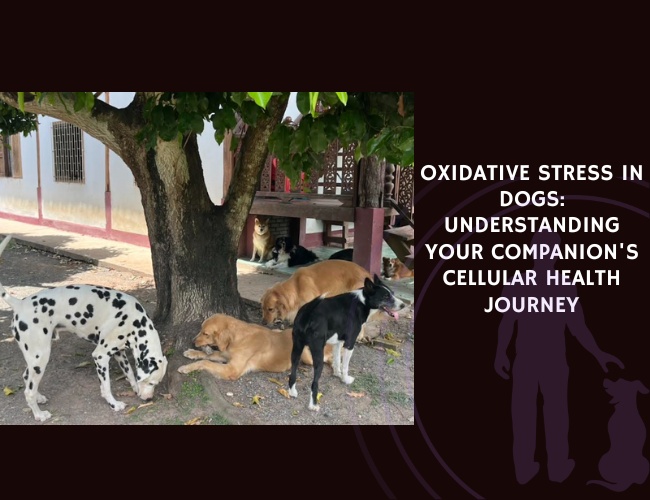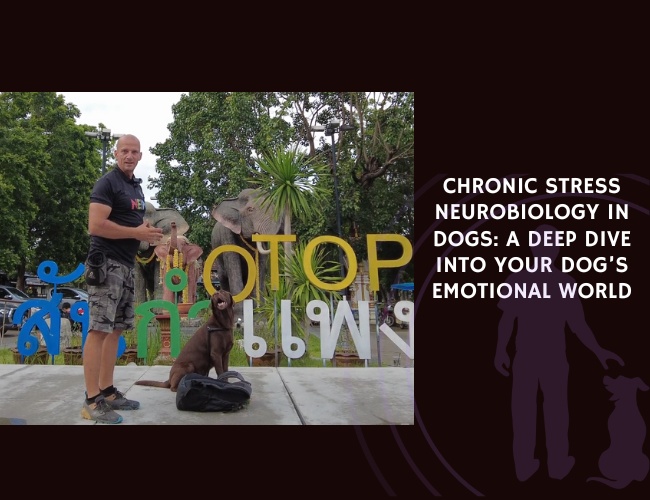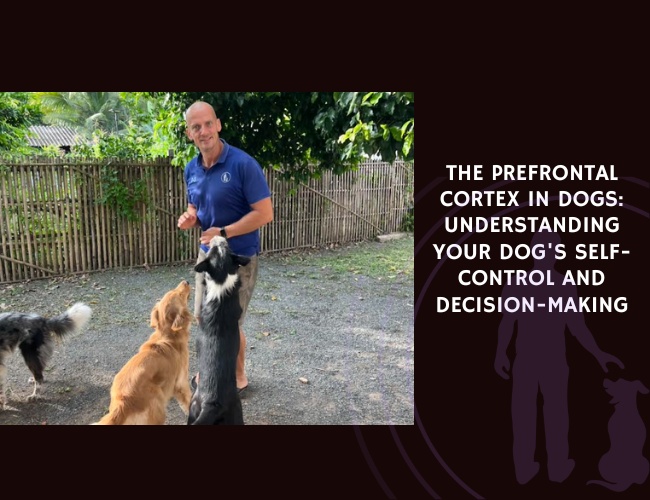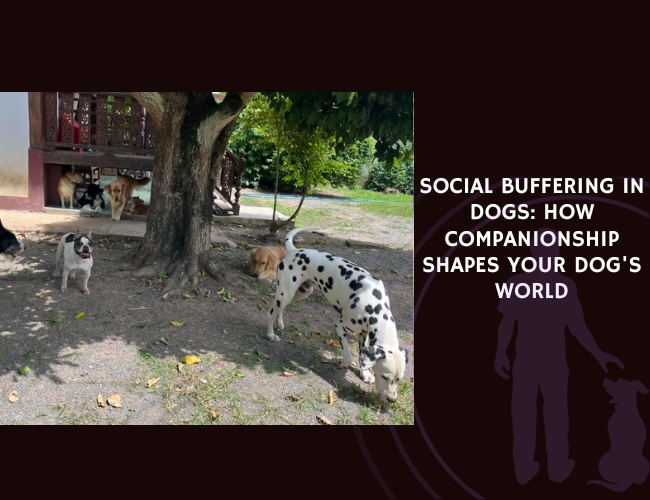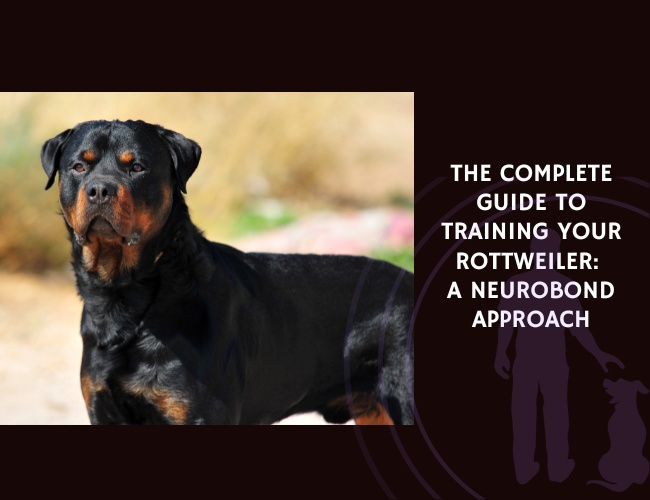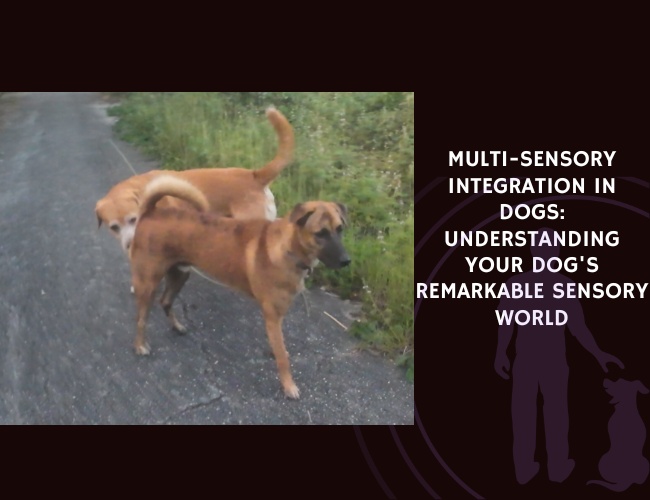Every breath your furry friend takes, every playful romp in the park, and even the simple act of digesting their favorite meal creates a fascinating biochemical dance within their body. At the heart of this dance lies a delicate balance that scientists call oxidative stress—a phenomenon that profoundly influences your dog’s cognitive health, behavior, and aging process. Let us guide you through this essential aspect of canine wellness, helping you understand how to support your companion’s health at the cellular level.
Did you know that your dog’s brain health begins at the molecular level? Just as we worry about our own aging and mental clarity, our canine companions face similar challenges—and understanding oxidative stress holds the key to helping them thrive throughout their lives. 🧡
Understanding Oxidative Stress: The Cellular Story
What happens inside your dog’s cells
Think of your dog’s body as a bustling city where millions of cellular “factories” work around the clock. These factories produce energy, but like any industrial process, they create waste products—in this case, molecules called free radicals. When your dog’s natural cleanup crew (antioxidants) can’t keep pace with this waste production, oxidative stress occurs.
The balance equation: In a healthy dog, antioxidants neutralize free radicals before they cause damage. But when this balance tips—whether from aging, stress, poor diet, or illness—cellular damage begins to accumulate. This isn’t just abstract science; it directly affects how your dog thinks, feels, and behaves.
Visible signs you might notice: While you can’t see oxidative stress happening, you might observe its effects through changes in your dog’s energy levels, coat quality, or even their ability to remember where they buried their favorite toy. These everyday observations connect directly to what’s happening at the cellular level.
The Brain-Behavior Connection: How Oxidative Stress Shapes Your Dog’s Mind
Cognitive changes you might observe
Your dog’s brain is particularly vulnerable to oxidative stress because it uses about 20% of their body’s oxygen supply despite being only 2% of their body weight. This high metabolic activity means more free radical production—and more potential for damage when antioxidant defenses falter.
Memory and learning impacts: Have you noticed your senior dog forgetting familiar routes or struggling with commands they once knew perfectly? This isn’t just “getting old”—it’s often oxidative stress affecting the hippocampus, your dog’s memory center. The good news? Understanding this connection empowers you to take protective action.
Emotional regulation changes: Oxidative stress doesn’t just affect memory; it influences your dog’s emotional world too. The amygdala, responsible for processing emotions, becomes hypersensitive under oxidative stress. This means your typically calm companion might become more anxious, reactive, or even show signs of depression.
Behavioral manifestations of cellular stress
When oxidative stress affects your dog’s brain, behavioral changes often follow predictable patterns. Recognizing these patterns helps you understand that your dog isn’t being “difficult”—they’re experiencing genuine neurological challenges.
Anxiety and stress responses:
- Increased pacing or restlessness, especially in the evening
- Heightened reactions to familiar sounds or situations
- Difficulty settling down, even in comfortable environments
- Changes in sleep patterns or increased nighttime activity
Cognitive dysfunction signs:
- Disorientation in familiar spaces
- Decreased interaction with family members
- Changes in house-training habits
- Altered activity levels (either increased aimless activity or decreased engagement)
These behaviors tell a story of cellular struggle—one that you can help rewrite through targeted interventions.
Measuring and Monitoring: Understanding Your Dog’s Oxidative Status
Laboratory markers your vet might discuss
While you can’t see oxidative stress directly, modern veterinary medicine offers sophisticated ways to measure it. Understanding these markers helps you have more informed conversations with your veterinary team about your dog’s health strategy.
Malondialdehyde (MDA) levels: This marker indicates lipid peroxidation—essentially, how much cellular membrane damage is occurring. Higher MDA levels often correlate with increased anxiety and cognitive challenges in dogs. Your vet might recommend this test if your dog shows behavioral changes.
Antioxidant enzyme activity: Tests measuring superoxide dismutase (SOD) and glutathione peroxidase (GPx) reveal how well your dog’s natural defense systems are functioning. Think of these as your dog’s internal cleanup crew efficiency rating.
Reactive oxygen species (ROS) assessment: Direct measurement of free radicals provides real-time insight into oxidative load. This advanced testing helps identify dogs at risk before clinical signs appear.
Practical observation techniques at home
You don’t need laboratory tests to begin monitoring your dog’s oxidative health. Simple, consistent observation provides valuable information about their cellular wellness.
Daily behavior tracking: Keep a simple journal noting energy levels, response to commands, and any unusual behaviors. Patterns emerging over weeks or months often reveal oxidative stress impacts before they become severe.
Physical indicators to monitor:
- Coat quality and shine (dullness may indicate oxidative damage)
- Eye clarity and brightness
- Gum color and oral health
- Recovery time after exercise
Next, we’ll explore how nutrition becomes your most powerful tool in managing oxidative stress.
Nutritional Strategies: Feeding for Cellular Protection
The antioxidant arsenal in your dog’s bowl
Every meal you serve your dog is an opportunity to combat oxidative stress. The right nutritional choices act like tiny cellular shields, protecting your companion’s brain and body from free radical damage.
Vitamin E: The membrane protector: This fat-soluble vitamin guards cell membranes throughout your dog’s body, with particular importance for brain cells. Foods rich in vitamin E include sunflower oil (in moderation), wheat germ, and certain fish. The recommended daily amount varies by size, but most dogs benefit from 2-4 IU per pound of body weight.
Vitamin C: The water-soluble warrior: Unlike humans, dogs produce their own vitamin C, but supplementation during times of stress or aging can provide additional protection. Safe sources include small amounts of blueberries, strawberries, and sweet potatoes.
Selenium and zinc: The enzyme supporters: These minerals help your dog’s natural antioxidant enzymes function optimally. Quality commercial foods usually contain adequate amounts, but dogs with digestive issues might need supplementation.
Omega-3 fatty acids and brain health
The connection between omega-3 fatty acids and cognitive function represents one of the most exciting areas in canine nutrition science. These essential fats don’t just reduce inflammation—they actively support brain cell communication and protect against oxidative damage.
DHA and EPA benefits: These specific omega-3s, found primarily in fish oil, cross the blood-brain barrier to provide direct neuroprotection. Studies show dogs receiving adequate omega-3s maintain better cognitive function as they age.
Practical supplementation: For most dogs, 20-55mg of combined EPA and DHA per pound of body weight provides therapeutic benefits. Start with lower doses and gradually increase to avoid digestive upset. Your dog’s size, age, and health status all influence optimal dosing.
Polyphenols and novel antioxidants
Beyond traditional vitamins, a world of plant-based compounds offers powerful oxidative stress protection. These phytonutrients, once considered “non-essential,” now emerge as crucial players in canine cognitive health.
Berry power compounds: Blueberries, cranberries, and blackberries contain anthocyanins that cross the blood-brain barrier, directly protecting neurons from oxidative damage. A few berries as treats provide both enjoyment and neuroprotection.
Green tea catechins: While dogs shouldn’t drink tea, controlled amounts of decaffeinated green tea extract in supplements offer potent antioxidant benefits. These compounds show particular promise in protecting aging brains.
Curcumin considerations: This turmeric compound demonstrates impressive anti-inflammatory and antioxidant properties. However, absorption challenges mean it requires specific formulations for dogs—always choose veterinary-approved products.

Breed-Specific Vulnerabilities: Understanding Your Dog’s Genetic Blueprint
High-risk breeds and their unique challenges
Just as certain human populations show genetic predispositions to specific health conditions, dog breeds exhibit varying susceptibilities to oxidative stress and its consequences. Understanding your breed’s vulnerabilities empowers proactive health management.
Beagles: The cognitive decline candidates: Research consistently shows Beagles experiencing earlier and more severe cognitive dysfunction syndrome compared to other breeds. Their naturally high metabolic rate combined with genetic factors creates perfect conditions for oxidative damage. If you share your life with a Beagle, consider beginning antioxidant support by age 5-6 years.
Doberman Pinschers: Neurological sensitivity: This breed’s elegance comes with heightened vulnerability to oxidative stress-related neurological issues. Their genetic makeup influences how efficiently they produce and utilize antioxidant enzymes. Doberman owners should prioritize omega-3 supplementation and regular cognitive assessments.
Small breeds and metabolic challenges: Yorkshire Terriers, Chihuahuas, and other toy breeds face unique oxidative stress challenges due to their rapid metabolisms. Their higher metabolic rate per pound of body weight means more free radical production—requiring proportionally more antioxidant support.
Genetic factors influencing antioxidant efficiency
Your dog’s DNA determines more than coat color and ear shape—it influences how effectively their body manages oxidative stress. Recent genetic studies reveal fascinating breed-specific variations in antioxidant enzyme production.
SOD gene variations: Some breeds naturally produce less superoxide dismutase, leaving them more vulnerable to oxidative damage. German Shepherds and Golden Retrievers often fall into this category, explaining their higher rates of age-related cognitive decline.
Glutathione production differences: Breeds with compromised liver function or genetic methylation issues struggle to produce adequate glutathione, the body’s master antioxidant. Supporting these dogs requires targeted nutritional strategies focusing on glutathione precursors like N-acetylcysteine (under veterinary guidance).
Lifestyle Optimization: Creating an Anti-Oxidant Environment
Exercise as medicine for cellular health
Movement isn’t just about maintaining healthy weight—it’s one of your dog’s most powerful tools against oxidative stress. But like any medicine, dosage matters. Understanding how to optimize exercise for antioxidant benefits transforms daily walks into therapeutic sessions.
The exercise paradox: While acute intense exercise temporarily increases free radical production, regular moderate activity actually enhances your dog’s antioxidant defenses. This adaptation, called hormesis, strengthens cellular resilience over time.
Optimal exercise patterns:
- Daily walks of 20-30 minutes provide ideal oxidative stress reduction
- Vary intensity with periods of sniffing and exploring (mental stimulation adds antioxidant benefits)
- Swimming offers low-impact, high-benefit activity for older dogs
- Avoid exhaustive exercise, which tips the balance toward oxidative damage
Age-appropriate modifications: Senior dogs benefit from shorter, more frequent activity sessions rather than long walks. This approach maintains antioxidant benefits while preventing excessive oxidative stress from overexertion.
Environmental factors and oxidative load
Your dog’s living environment profoundly influences their oxidative stress levels. Modern life exposes our companions to numerous oxidative stressors their wild ancestors never faced.
Urban vs. rural considerations: City-dwelling dogs face higher oxidative loads from air pollution, noise stress, and limited green space access. If you live in an urban environment, consider:
- Using air purifiers in your home
- Choosing walking routes away from heavy traffic
- Providing extra antioxidant support through diet
- Creating calm spaces for stress reduction
Household toxins to minimize:
- Cigarette smoke (even secondhand exposure significantly increases oxidative stress)
- Chemical cleaning products (opt for pet-safe, natural alternatives)
- Pesticides and herbicides in yards and parks
- Scented candles and air fresheners containing synthetic fragrances
Stress reduction strategies: Chronic psychological stress elevates oxidative stress as powerfully as physical toxins. Creating predictable routines, providing safe spaces, and maintaining consistent training approaches all contribute to lower oxidative loads.
Sleep and recovery patterns
Quality sleep represents your dog’s nightly cellular repair session. During deep sleep, the brain literally cleanses itself of oxidative waste products accumulated during waking hours.
Optimizing sleep quality:
- Maintain consistent sleep-wake schedules
- Provide comfortable, temperature-appropriate bedding
- Minimize nighttime disruptions
- Consider orthopedic support for older dogs
Signs of poor sleep quality: Restless sleep, frequent position changes, or excessive daytime napping might indicate your dog isn’t achieving restorative sleep. These patterns often correlate with increased oxidative stress markers.
Protect. Balance. Thrive.
Cell health shapes the mind. Oxidative stress disrupts brain function, influencing memory, learning, and emotional stability. Supporting antioxidant defenses protects both cognitive clarity and emotional balance.
Behavior tells the story. Restlessness, confusion, and altered social interaction often reflect underlying cellular strain. Recognizing these changes turns frustration into informed, compassionate care.


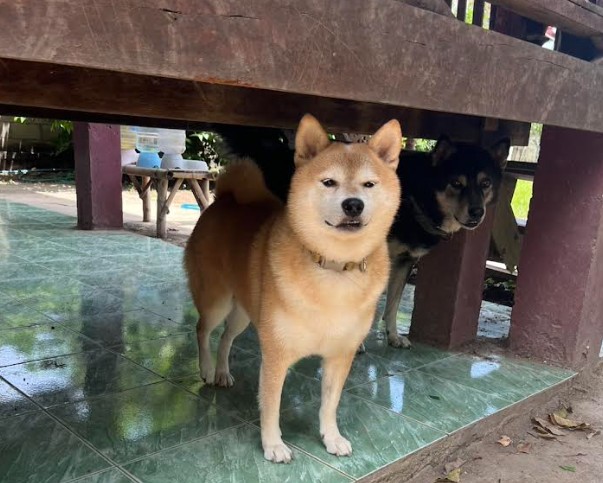
Nutrition is defense. Antioxidant-rich foods and targeted supplements act as cellular shields, slowing damage, enhancing resilience, and helping your dog age with vitality and confidence.
Age-Related Considerations: Supporting Your Senior Companion
The aging acceleration phenomenon
After age seven (earlier in large breeds), oxidative stress accelerates aging through a vicious cycle: aging increases oxidative stress, which further accelerates aging. Understanding this cycle helps you intervene effectively during your dog’s golden years.
Mitochondrial dysfunction: These cellular powerhouses become less efficient with age, producing more free radicals while generating less energy. This explains why senior dogs tire more easily and recover more slowly from activity.
Cumulative damage effects: Years of oxidative stress create accumulated cellular damage that becomes increasingly difficult to repair. This makes prevention and early intervention crucial—waiting until severe symptoms appear limits treatment effectiveness.
Cognitive dysfunction syndrome management
Canine cognitive dysfunction syndrome (CDS) affects 28% of dogs aged 11-12 and 68% of dogs aged 15-16. This condition, similar to human Alzheimer’s disease, stems largely from oxidative damage to brain cells.
Early warning signs to recognize:
- Staring at walls or into space
- Getting stuck in corners
- Failing to recognize familiar people
- Increased vocalization, especially at night
- House soiling despite previous training
Multimodal management approach: Successfully managing CDS requires combining nutritional support, environmental enrichment, and sometimes pharmaceutical intervention. No single approach provides complete protection, but combination strategies show remarkable success.
Pharmaceutical considerations: Medications like selegiline (Anipryl) work by reducing oxidative stress and increasing dopamine availability. These drugs work best when combined with antioxidant-rich diets and cognitive enrichment activities.
Senior-specific supplementation protocols
Older dogs require different antioxidant strategies than their younger counterparts. Their decreased absorption efficiency and increased oxidative load demand targeted supplementation approaches.
Enhanced dosing requirements: Senior dogs often need 25-50% higher antioxidant doses to achieve the same cellular protection as younger dogs. This isn’t about megadosing—it’s about compensating for age-related absorption and utilization changes.
Combination formulas: Single antioxidants rarely provide comprehensive protection for senior dogs. Look for supplements combining:
- Multiple antioxidant vitamins (E, C, A)
- Trace minerals (selenium, zinc, manganese)
- Phytonutrients (resveratrol, quercetin)
- Mitochondrial support compounds (CoQ10, L-carnitine)
Integrative Approaches: Combining Strategies for Maximum Protection
Creating your dog’s personalized antioxidant protocol
Every dog is unique, and their oxidative stress management plan should reflect their individual needs. Developing a personalized protocol involves assessing multiple factors and adjusting strategies based on response.
Assessment foundations:
- Current age and life stage
- Breed-specific vulnerabilities
- Existing health conditions
- Environmental exposures
- Stress levels and lifestyle
- Current diet quality
Protocol development steps: Start with dietary optimization as your foundation. Add targeted supplements based on specific needs. Layer in lifestyle modifications gradually. Monitor response and adjust accordingly. This stepwise approach prevents overwhelming your dog’s system while building comprehensive protection.
Monitoring progress and adjusting strategies
Success in managing oxidative stress requires ongoing observation and flexibility. What works for your dog at age 8 might need modification by age 10.
Monthly evaluation points:
- Energy levels and exercise tolerance
- Cognitive sharpness and training response
- Coat quality and skin health
- Mood stability and stress resilience
- Sleep quality and daytime alertness
When to adjust protocols: If you don’t see improvement within 6-8 weeks, or if your dog’s condition changes, protocol adjustment may be necessary. This might mean changing supplement forms, adjusting doses, or adding new interventions.
Working with your veterinary team
Managing oxidative stress optimally requires partnership with veterinary professionals who understand both conventional and integrative approaches.
Questions to ask your vet:
- Can we test my dog’s oxidative stress markers?
- Which supplements are most appropriate for my dog’s specific situation?
- How do prescribed medications interact with antioxidant supplements?
- What monitoring schedule do you recommend?
- Are there specialists who focus on cognitive health in dogs?
Integrative veterinary resources: Consider seeking veterinarians certified in integrative medicine, nutrition, or rehabilitation. These specialists often provide more comprehensive oxidative stress management strategies.

Prevention Strategies: Starting Early for Lifelong Benefits
Puppy and young dog foundations
While oxidative stress concerns typically focus on older dogs, establishing protective patterns early provides lifelong benefits. Think of early intervention as investing in your dog’s cognitive retirement fund.
Early life nutrition: Puppies fed antioxidant-rich diets show better cognitive development and maintain higher cognitive function throughout life. This doesn’t mean over-supplementing—it means choosing quality foods with natural antioxidant sources.
Building resilience through exposure: Controlled exposure to mild stressors during puppyhood builds robust antioxidant systems. This includes varied environments, different surfaces, new experiences—all within safe, positive contexts.
Maintenance strategies for adult dogs
The adult years (ages 2-7 for most breeds) represent your opportunity to maintain cellular health and prevent accumulation of oxidative damage.
Proactive supplementation timing: Beginning moderate antioxidant supplementation around age 5 (earlier for large breeds) provides protection before significant damage occurs. This preventive approach proves more effective than trying to reverse established damage.
Regular health screening: Annual wellness exams should include discussions about oxidative stress prevention. Blood work can reveal early markers suggesting increased oxidative load, allowing intervention before clinical signs appear.
Special Considerations: When Standard Approaches Aren’t Enough
Managing acute oxidative stress events
Certain situations dramatically increase oxidative stress, requiring temporary protocol intensification. Recognizing these situations helps you provide extra support when your dog needs it most.
Surgery and anesthesia: Medical procedures create oxidative stress through multiple mechanisms. Pre-surgical antioxidant loading and post-operative support accelerate healing and reduce complications.
Illness and infection: Fighting disease increases free radical production. During illness, your dog’s antioxidant needs may double or triple. Work with your vet to safely increase support during these critical periods.
Psychological trauma: Major life changes—moving, losing a companion, or experiencing trauma—create oxidative stress through elevated cortisol and stress hormones. Extra nutritional support during transitions helps maintain cellular health despite emotional challenges.
Complex case management
Some dogs face multiple oxidative stress challenges requiring sophisticated management strategies. These complex cases benefit from systematic approaches addressing all contributing factors.
Comorbidity considerations: Dogs with diabetes, heart disease, or chronic inflammation experience compounded oxidative stress. Each condition requires specific antioxidant strategies that must integrate smoothly.
Drug-nutrient interactions: Many medications influence oxidative stress or interact with antioxidants. Steroids increase oxidative load, while some antibiotics deplete specific antioxidants. Understanding these interactions ensures safe, effective supplementation.
The Future of Oxidative Stress Management
Emerging research and treatments
Scientific understanding of canine oxidative stress expands rapidly, bringing new treatment possibilities. Staying informed about emerging strategies helps you provide cutting-edge care for your companion.
Targeted antioxidant delivery: New technologies allow antioxidants to reach specific organs or cell types. Liposomal formulations and nanoparticle delivery systems promise more effective treatment with lower doses.
Genetic testing advances: Soon, simple genetic tests will reveal your dog’s specific oxidative stress vulnerabilities, allowing truly personalized prevention strategies from puppyhood.
Biomarker development: Researchers work on simple, affordable tests for home oxidative stress monitoring. Imagine checking your dog’s oxidative status as easily as taking their temperature.
Natural compound discoveries
Nature continues revealing powerful antioxidant compounds with potential benefits for our canine companions.
Adaptogenic herbs: Compounds like ashwagandha and rhodiola show promise in helping dogs adapt to oxidative stress while supporting overall resilience. Research continues on safe, effective dosing for dogs.
Marine-derived antioxidants: Astaxanthin and other marine compounds demonstrate exceptional ability to cross the blood-brain barrier and protect neural tissue. These compounds may revolutionize cognitive protection strategies.
Practical Implementation: Your 30-Day Action Plan
Week 1: Assessment and foundation
Begin by thoroughly assessing your dog’s current status. Document baseline behaviors, energy levels, and any concerning signs. Review their current diet, noting antioxidant sources and gaps.
Action steps:
- Complete a behavioral assessment questionnaire
- Photograph your dog for coat quality comparison
- Schedule a veterinary consultation if needed
- Research quality antioxidant supplements appropriate for your dog
Week 2: Dietary optimization
Transition to an antioxidant-rich diet gradually. Add whole food antioxidant sources while maintaining digestive comfort.
Implementation strategy:
- Introduce one new antioxidant-rich food every 2-3 days
- Monitor for digestive upset or allergic reactions
- Adjust portion sizes to maintain healthy weight
- Begin basic supplementation if appropriate
Week 3: Lifestyle modifications
Implement environmental and lifestyle changes supporting cellular health. Focus on sustainable changes you can maintain long-term.
Key modifications:
- Establish optimal exercise routines
- Create stress-reduction strategies
- Improve sleep environment
- Minimize toxin exposure
Week 4: Evaluation and refinement
Assess initial responses and refine your approach based on observations. This week establishes patterns for ongoing management.
Evaluation points:
- Compare current behavior to baseline
- Note any improvements or concerns
- Adjust protocols based on response
- Plan for long-term maintenance
Conclusion: Empowering Your Dog’s Cellular Health Journey
Understanding oxidative stress transforms how you approach your dog’s health and aging process. You now possess knowledge that empowers you to protect your companion at the cellular level—knowledge that translates directly into improved quality of life, enhanced cognitive function, and potentially added years of joyful companionship.
Remember, managing oxidative stress isn’t about perfection—it’s about consistent, informed choices that support your dog’s natural resilience. Every antioxidant-rich meal, every stress-reducing walk, and every moment of restorative sleep contributes to cellular protection.
Your dog depends on you to make health decisions they cannot make for themselves. By understanding and addressing oxidative stress, you’re not just adding years to their life—you’re adding life to their years. The journey toward optimal cellular health begins with a single step, and you’ve already taken it by educating yourself about this crucial aspect of canine wellness.
As you implement these strategies, remember that every dog responds differently. What matters most is your commitment to observing, adjusting, and advocating for your companion’s health. Together, you and your furry friend can navigate the challenges of oxidative stress, maintaining vitality, cognitive sharpness, and that special bond that makes the human-canine relationship so extraordinary. 🐾

